
|

Glimpses from our 2010 Project Voyage to Kenya: Rabai — Dr. Krapf's Historic Missionary Station
Office of Foerderkreis Kenia Freudenstadt e.V., Germany. Updated version. Original English version of this page first published December 02, 2010. Page 5/6.
Thursday, 2/15/2010, Missionary Station of Dr Krapf in Rabai
After a hard and difficult journey, the society's project coordinator and another society member visited the memorial of 19th century missionary Dr. Ludwig Krapf in Rabai. The German Embassy in Kenya financed preservation and restoration of the memorial.
|

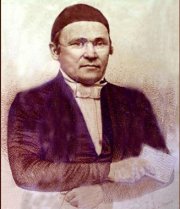
|
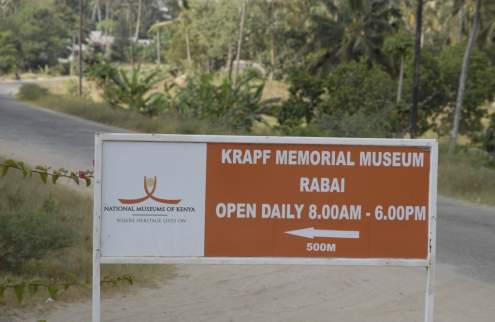
|
|
Pastor Dr. Ludwig Krapf, 1810–1881.
19th century image, courtesy of the society's project coordinator.
|
Road sign at the crossroads to the former mission building of Wurttemberg pastor Dr. Ludwig Krapf, the first European missionary who came to East Africa in the mid-19th century.
|
|
The child of a Swabian farmer's family, Krapf was born January 11, 1810 in Derendingen, nowadays a suburb of Tübingen city. He died November 26, 1881 in Korntal near Stuttgart. Krapf, closely connected to pietism, was not only the first German protestant missionary in today's Kenya but also an important linguist and discoverer of his time. His private life was characterized by several hardships including the death of his first wife and two of his newly born children.
Originally having started out with a training to become a missionary of the Basel Mission, he decided to instead study theology in Tübingen from 1829 through 1834, a time that was followed by his vicariate in the Wurttemberg town of Altburg, near Calw, and Wolfenhausen, a village near Rottenburg / Neckar.
|
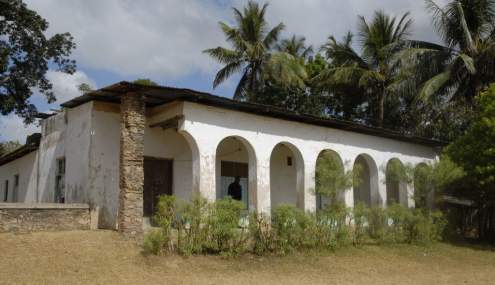
Former mission building of Dr. Krapf in Rabai — well preserved in its original state with the sole exception of the ancient roof framework which got lost during the ages.
|
|
In 1836, he joined the British Church Missionary Society, which first sent him to Abyssinia (today part of Ethiopia). Shortly after his arrival, however, a Catholic missionary caused his eviction from the country. In 1839 he went on working in Shoa province among the semi-nomadic Oromo, a people also known under the name of Galla. After a journey to Kairo in 1842, where he married his Basel-born wife, he was refused reentry to Shoa.
|
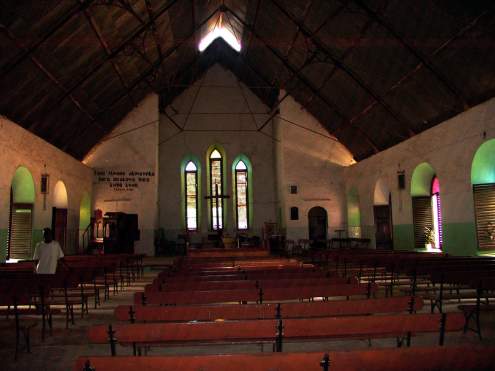
Interior of church building on the mission's compound in Rabai.
|
|
This caused him to search for another territory to work in. In 1844, he founded the first British missionary station north of Mombasa among the Wanyika tribe, calling the station "Rabbai Mpya" (today's Rabai village).
Starting 1846 he was assisted by Johannes Rebmann, another Swabian missionary from Gerlingen near Stuttgart. Both men undertook several successful journeys into the East African mainland like, for example, to Teita, Usambara (in today's Tanzania), the Kikuyu area (Kenya), and the Tana River region (Kenya).
|
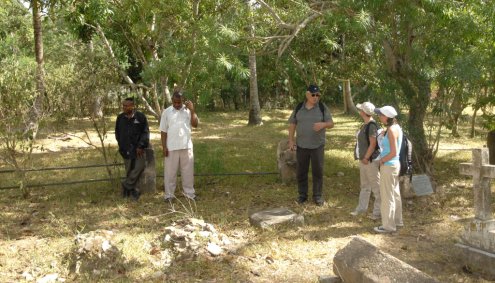
Visit to the historic graveyard in Rabai where many missionaries are buried.
|
|
During their voyages into the interior of East Africa, Rebmann discovered the Kilimanjaro Mountain May 11, 1848 and Krapf the Mount Kenya on December 3, 1849. Europeans did not trust the reports of these missionaries and discoverers who reported having found ice and snow just 220 and 10 miles south of the equator. Today, many believe that it was Krapf who christened Mount Kenya after having asked local Akamba for its name whereupon they responded, in their language, with the word "Kiinyaa" whose translation, according to literature, is "mountain of the ostrich" (similarity of the snowy mountain top to an ostrich's body). Other authors believe the mountain's name to be derived from the word "Kere-nyaga", meaning "white mountain" in the language of the Kikuyu, a people whose home is the Kenyan highlands. Later on, the name of "Mount Kenya" was applied to the whole of the country.
|
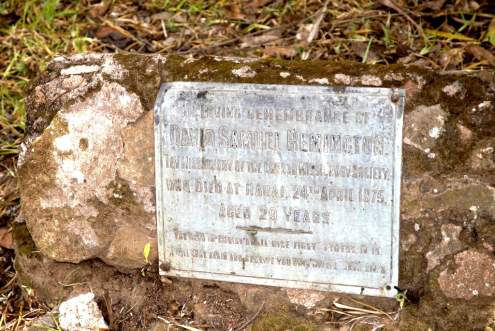
Headstone of a British missionary's grave who died 1875 in Rabai.
|
|
One further example of the numerous geographic discoveries made by Krapf and Rebmann is the way they handled reports they obtained on the existence of a great lake in the country's interior: they added this information to a map for the British Royal Geographical Society thus laying one of the foundations for Richard Francis Burton's and John Hanning Speke's first journey to the interior of Africa in 1857 and 1858, and also for the later discovery of the great lakes in the source region of river Nile.
Due to health issues, Krapf returned to Europe and moved on to Korntal in 1855 where his coworker Johannes Rebmann followed him. In 1861, however, Krapf accompanied two missionaries of the United Methodist Church (UMC) to East Africa, and in 1868, knowing the country well, he assisted a British military expedition, led by Lord Napier, serving as both their adviser and translator. Being especially interested in bridging the cultural gap between Europeans and Africans, he devoted a substantial part of his time to linguistic studies. He translated large parts of the Bible to African languages like Tigrinya, Oromo, Amharic (a language spoken in Christian Ethiopia), and Ge'ez. Additional mention should be made of his being the author of the first Swahili grammar for which he used the Roman alphabet thus replacing the Arab glyphs then still in use by its native speakers — today, Swahili is written entirely using Roman characters. Until the second half of the 19th century, the entire region had been uncharted territory on European maps. Due to his activities and accomplishments, Krapf thus played an important role in making sub-Saharan Africa known to Europeans.
|
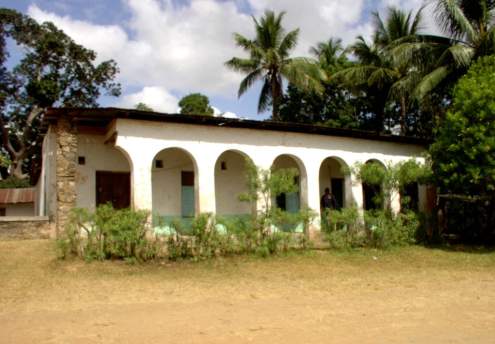
Additional image of the Krapf missionary building in Rabai.
|
|
|

|







